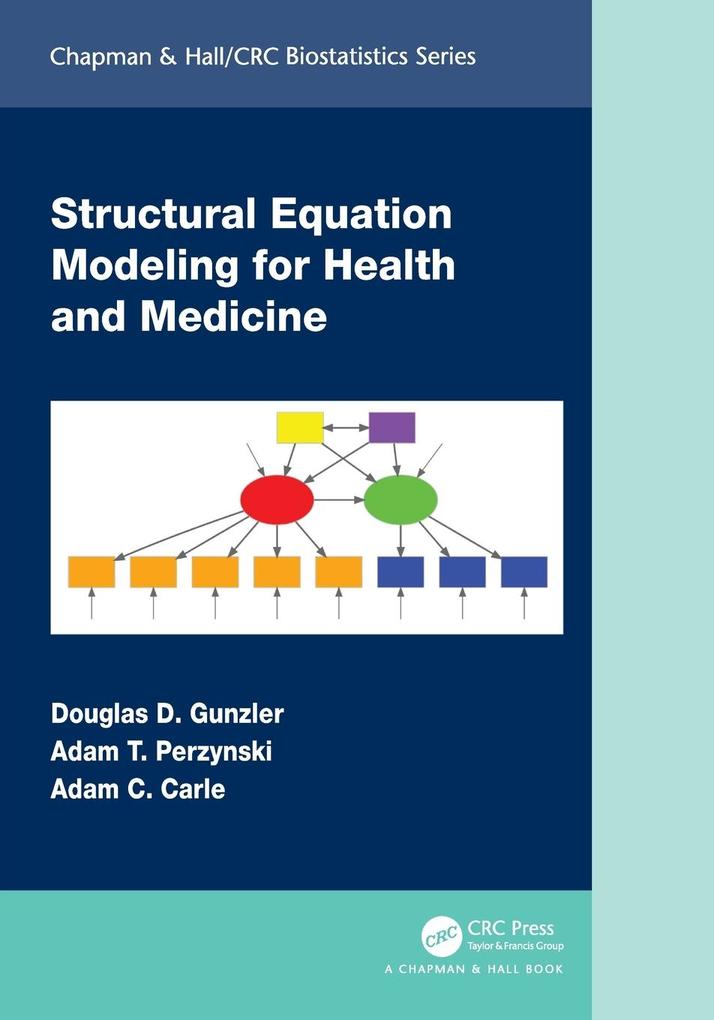
Zustellung: Di, 29.04. - Sa, 03.05.
Versand in 6 Tagen
VersandkostenfreiBestellen & in Filiale abholen:
SEM is a very general and flexible multivariate technique that allows relationships among variables to be examined. The roots of SEM are in the social sciences. In writing this textbook, we look to make SEM accessible to a wider audience of researchers across many disciplines, addressing issues unique to health and medicine.
Structural equation modeling (SEM) is a very general and flexible multivariate technique that allows relationships among variables to be examined. The roots of SEM are in the social sciences. In writing this textbook, the authors look to make SEM accessible to a wider audience of researchers across many disciplines, addressing issues unique to health and medicine.
SEM is often used in practice to model and test hypothesized causal relationships among observed and latent (unobserved) variables, including in analysis across time and groups. It can be viewed as the merging of a conceptual model, path diagram, confirmatory factor analysis, and path analysis. In this textbook the authors also discuss techniques, such as mixture modeling, that expand the capacity of SEM using a combination of both continuous and categorical latent variables.
Features:
- Basic, intermediate, and advanced SEM topics
- Detailed applications, particularly relevant for health and medical scientists
- Topics and examples that are pertinent to both new and experienced SEM researchers
- Substantive issues in health and medicine in the context of SEM
- Both methodological and applied examples
- Numerous figures and diagrams to illustrate the examples
As SEM experts situated among clinicians and multidisciplinary researchers in medical settings, the authors provide a broad, current, on the ground understanding of the issues faced by clinical and health services researchers and decision scientists. This book gives health and medical researchers the tools to apply SEM approaches to study complex relationships between clinical measurements, individual and community-level characteristics, and patient-reported scales.
Inhaltsverzeichnis
Part I Introduction to Concepts and Principles of Structural Equation Modeling for Health and Medical Research
1. Introduction and Brief History of Structural Equation Modeling for Health and Medical Research
2. Vocabulary, Concepts and Usages of Structural Equation Modeling
Part II Theory of Structural Equation Modeling
3 The Form of Structural Equation Models
4 Model Estimation and Evaluation
5 Model Identifiability and Equivalence
Part III Applications and Examples of Structural Equation Modeling for Health and Medical Research
6 Choosing Among Competing Specifications
7 Measurement Models for Patient-Reported Outcomes and Other Health-related Outcomes
8 Exploratory Factor Analysis
9 Mediation and Moderation
10 Measurement Bias, Multiple Indicator Multiple Cause Modeling and Multiple Group Modeling
11 Latent Class Analysis
12 Latent Profile Analysis
13 Structural Equation Modeling with Longitudinal Data
14 Growth Mixture Modeling
15 Special Topics
1. Introduction and Brief History of Structural Equation Modeling for Health and Medical Research
2. Vocabulary, Concepts and Usages of Structural Equation Modeling
Part II Theory of Structural Equation Modeling
3 The Form of Structural Equation Models
4 Model Estimation and Evaluation
5 Model Identifiability and Equivalence
Part III Applications and Examples of Structural Equation Modeling for Health and Medical Research
6 Choosing Among Competing Specifications
7 Measurement Models for Patient-Reported Outcomes and Other Health-related Outcomes
8 Exploratory Factor Analysis
9 Mediation and Moderation
10 Measurement Bias, Multiple Indicator Multiple Cause Modeling and Multiple Group Modeling
11 Latent Class Analysis
12 Latent Profile Analysis
13 Structural Equation Modeling with Longitudinal Data
14 Growth Mixture Modeling
15 Special Topics
Mehr aus dieser Reihe
Produktdetails
Erscheinungsdatum
26. September 2022
Sprache
englisch
Seitenanzahl
324
Reihe
Chapman & Hall/CRC Biostatistics Series
Autor/Autorin
Adam C. Carle, Adam T. Perzynski, Douglas D. Gunzler
Verlag/Hersteller
Produktart
kartoniert
Abbildungen
86 SW-Abb., 86 SW-Zeichn., 30 Tabellen
Gewicht
612 g
Größe (L/B/H)
254/178/18 mm
ISBN
9780367742331
Entdecken Sie mehr
Bewertungen
0 Bewertungen
Es wurden noch keine Bewertungen abgegeben. Schreiben Sie die erste Bewertung zu "Structural Equation Modeling for Health and Medicine" und helfen Sie damit anderen bei der Kaufentscheidung.

































